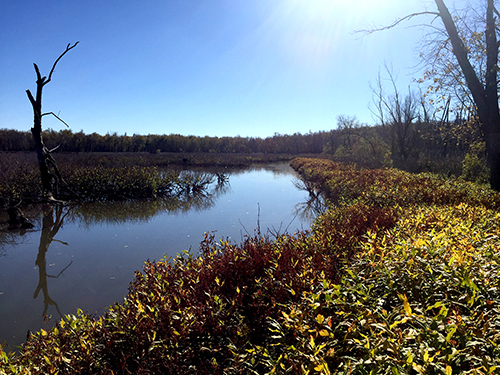
MIKE MILLER
Another gathering of land organizations and agencies occurs in late February at the Prairie State Conservation Coalition conference. PSCC is a collection of land trusts and conservation agencies that work to develop statewide goals and collaborations to enhance the chances to successfully preserve and restore natural areas within the member’s service regions. Without workshops and gatherings like these, land conservation efforts can become somewhat fragmented. So often, land conservation organizations are focused on what is happening within their geographic region, and they become blind to what’s happening in other regions of the state. It is an opportunity to learn from each other’s successes, and failures.
For all of Illinois’ challenges, there is a lot to be proud of when it comes to the preservation of high-quality natural areas. David Holeman, a GIS guru with the Prairie State Conservation Coalition, puts together an annual report of conservation acquisitions throughout the state. In his 2018 Year-in-Review report, he notes that private land trust organizations acquired over 1,650 acres of property, while the public sector (state and local agencies) acquired over 3,830 acres of habitat.

Chillicothe Bottoms is adjacent to Moffit Park on the north side of Chillicothe. The property is owned by The Illinois Audubon Society. (PHOTO BY MIKE MILLER)
The public sector hasn’t been totally absent from the land preservation business in the Tri-County region. Across the Illinois River from Chillicothe, in northwestern Woodford County, the Illinois Department of Natural Resources took title to 243.1 acres of property previously protected by Ducks Unlimited. This property is immediately adjacent to the Woodford State Fish and Wildlife Area. This property is a mix of wetlands, open water, agricultural lands and woodlands and will provide improved access to the refuge from IL Route 26.
While not in our Tri-County region, something spectacular happened that will benefit anyone who enjoys the short drive up-river to our most visited state park in Illinois. The largest land acquisition in recent times was accomplished up in LaSalle County when the Illinois Department of Natural Resources acquired over 2,600 acres to expand Starved Rock and Matthiessen State Parks.
The need for both the public and private sector to work together in the preservation and stewardship of our few remaining natural areas is more important now than ever. Illinois is one of the most “altered” states in the nation. If someone who lived 200+ years ago were to be dropped into Illinois today, they would hardly recognize the place. Gone are the prairies, marshes, wetlands and oak-woodlands. They wouldn’t see prairie chickens darkening the sky, nor bison grazing to the horizon. The Land of Lincoln is practically gone. The land of the Iliniwek is all but forgotten. But if one does look hard enough, they can still find glimpses of this ancient landscape. Thanks to the efforts of all those who preserve and protect that which remains.
